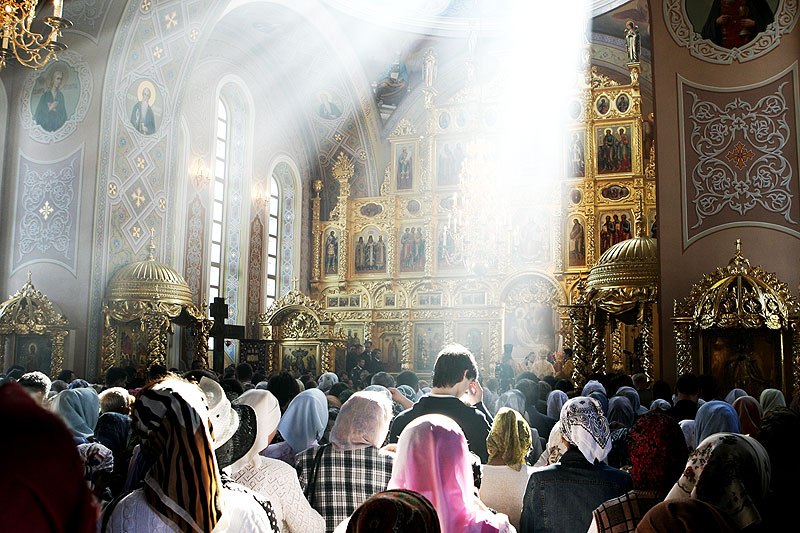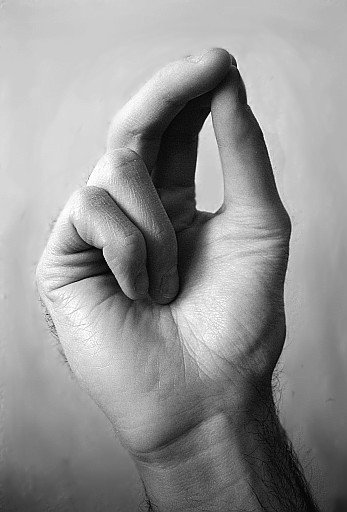Worship in the Orthodox Church often seems strange, especially to other Christians. You’ll notice many of these differences in worship the moment you enter the church, while others you may not notice for quite some time. Here we lay out what you should expect during your first visit to an Orthodox Church.
During Orthodox services, everyone faces East toward the altar and the icon of the crucified Lord. Even the priest. He faces the same direction as the congregation, as we look to Jesus throughout our worship. From the altar area, the priest leads us in prayer and directs the readers and chanters. You may notice the priest turn toward the congregation on occasion. He faces the congregation to bless us, to give the sermon from the pulpit, and to cense us with incense.
Read More: Why Orthodox Church Face East


Orthodox worship can be overwhelming if you’re experiencing it for the first (or even the second, third, or fourth) time. During worship, we mysteriously enter into the never-ending worship in the Kingdom of Heaven, singing with the angels, the Saints, and all other Orthodox Christians, no matter where they are in the world. Because we involve all our senses (taste, touch, smell, sight, and hearing) in our worship, there is a lot for your brain to process. Take time to absorb what you see, what you hear, what you smell. And ask questions! After the service ends, you can approach the priest and ask him about things you saw or heard during the service. He will be more than happy to talk with you!
If you plan to visit an Orthodox church, try to get there a bit early, so you can find the service books, find a spot/seat, and look around. The priest is always there early to let anyone in who wishes to pray privately before the service begins.

Another thing you should expect is quite a bit of standing during services in an Orthodox church. The faithful stand the majority of the time.
Our services usually last between one and two hours. The Liturgy of St. John Chrysostom, used in most Orthodox churches on most Sundays of the year, lasts about an hour and a quarter. Services during Lent (the fasting period before the Resurrection) can run a bit longer, sometimes between two and a half to three hours. Standing for all this time can easily intimidate newcomers.
Not to worry! Most churches will have some chairs or pews if you find the amount of standing too challenging. No one will think any less of you. Honestly, they probably won’t notice. After all, that is what prayer is about. Inward focus on God and the divine, not on what your neighbor is or isn’t doing.
Nearly three quarters of any given service is sung or chanted. The parishioners in Orthodox churches absolutely love to use their voices to sing to the Lord, so expect to hear a lot of it!
A choir typically leads the people in a Capella harmony, though some churches (mostly Greek Orthodox) may have an organ as well. In some parishes, the congregation does very little singing, and allows the choir to do most of it. In others, the entire congregation will join in. Depending on the Archdiocese, musical style also varies. In an Antiochian church, music is chanted in a Middle-Eastern style. But in a Russian or Serbian Orthodox church, you might hear four-part harmonies.
You’ll soon notice that the songs stay mostly the same from week to week. Before long, you’ll find you’ve memorized them. Then you can connect with God on a deeper level, which is what worship is all about!

Expect to see people making the sign of the cross constantly when you enter an Orthodox church. Traditionally, we cross ourselves at the following times:
In the Orthodox tradition, we cross ourselves with our right hand. We join our thumb, index, and middle fingertips and rest the ring and “pinky” fingers against our palm. First we touch the joined fingertips to our foreheads, then our abdomen. After this, we touch our right shoulder, and then the left. (This is the opposite of Roman Catholics and some Protestants.)
Some Orthodox cross themselves three times in a row. Others finish the sign of the cross with a sweep of their right hand along the floor. They may also cross themselves at different times.
All of this can be incredibly confusing at first. But don’t worry. No one expects you to get everything right the first time. Nor do they expect you to follow suit if it makes you uncomfortable. Crossing yourself correctly takes time, especially if you have crossed yourself differently in the past.
When you visit an Orthodox church, expect to see many painted pictures on the walls. These painted pictures of Christ, the Virgin Mary, and the Saints are called icons, and they are an important part of Orthodox spiritual life.
Icons mean far more to us than ordinary paintings. They serve as windows into the sacred realm of heaven, into the kingdom of God. The persons portrayed on these wooden icons are, in a spiritual way, present with us. So, do not be alarmed if you see Orthodox Christians crossing themselves in front of the icons and kissing them.
Keep Reading: Why The Orthodox Kiss Icons
In Orthodox churches, we love to venerate things: the icons, relics of the Saints, the Cross, and the hand of the priest. We even venerate one another. When we “venerate” something, that usually means we cross ourselves and kiss it. Sometimes we make a small bow, if venerating an icon or the Cross. But bowing and kissing does not mean worship! We worship no one other than the One True God. Rather, when we kiss or bow to something we convey love, honor, and respect toward the person, who is made in the image of God.
The Orthodox Church believes the Eucharist is a sacred sacrament, a family meal shared between those who are under the same Bishop, or another Bishop with whom he is in Communion. Simply put, this means Orthodox Christians practice inter-Communion with other Orthodox, but not with Protestants or Roman Catholics whose church leaders are not in Communion with Orthodox Bishops. (We call this practicing monogamous communion.)
Only baptized Christians confirmed in the Orthodox Faith who have prepared themselves (through penance and fasting) may approach the priest for Communion. The Orthodox believe the leavened bread and wine are the literal Body and Blood of the Lord Jesus Christ. It is holy beyond our comprehension; it is the Church’s treasure and must be protected. That is why it is reserved only for those who unite themselves with the Church.
Thus, the fact that Communion does not extend to persons from other Christian groups is not meant as an insult. All visitors are invited, at the end of the service, to approach the front to receive from the priest a piece of blessed bread.
Everyone is welcome to attend services and worship with us! We are always overjoyed when someone joins us for worship and experiences the beauty of the Orthodox Holy Tradition. And don’t worry – you do not have to be Greek, Serbian, Antiochian, Russian, etc. to attend one of those Orthodox churches!
Because the services differ from Protestant and Roman Catholic services, it is probably a good idea to contact someone at the parish (via Facebook or through their website) and tell them you intend to visit for worship. The priest will see that someone from the parish greets you and helps you find your way through the Service Book.
***If you would like to offer prayers for living and departed, please submit two separate requests: one for the living and one for the departed.